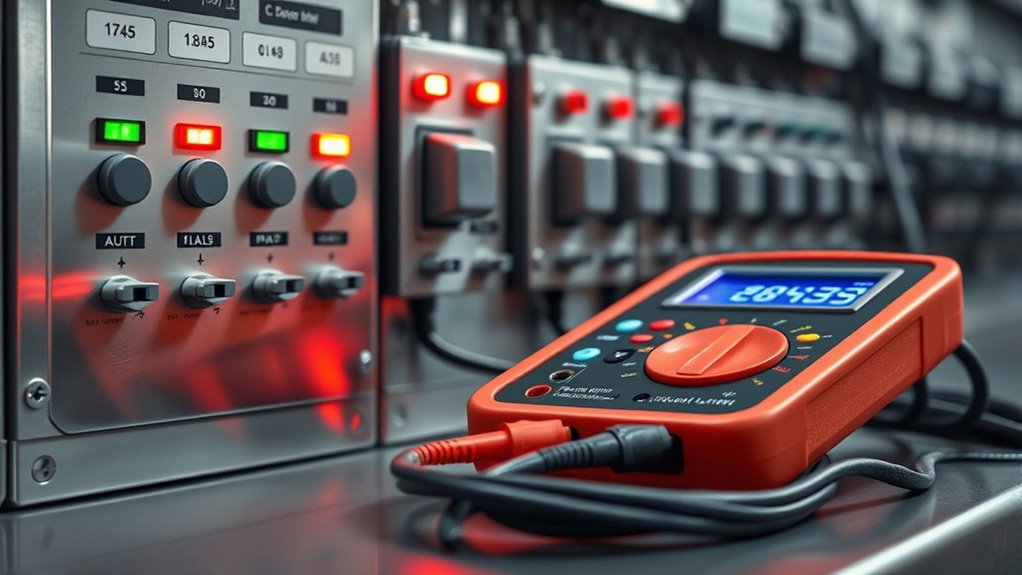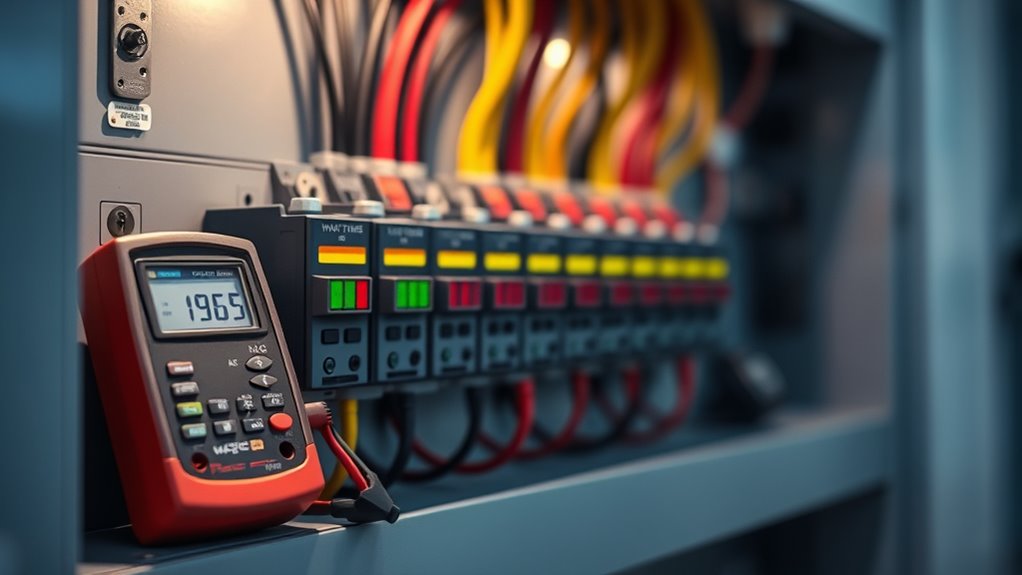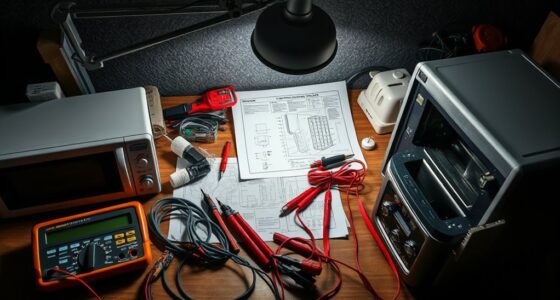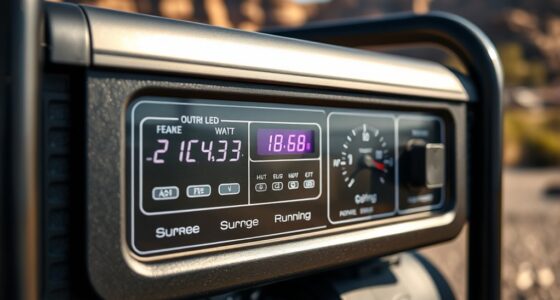To manage surge versus running watts, do make certain you understand that surge watts are needed only during startup, while running watts are for steady operation. Don’t underestimate appliance startup demands or forget to include a buffer for voltage fluctuations. Avoid choosing a generator that only matches running watts—always account for surge capacity. If you keep these tips in mind, you’ll prevent overloads and startup failures. Continue exploring to master this vital power planning.
Key Takeaways
- Do accurately identify both appliances’ starting (surge) and running wattages before selecting a generator.
- Not that: Overlook the surge watt requirements; always include a buffer for startup power.
- Do match your generator’s surge capacity with the highest startup wattage of your appliances.
- Not that: Ignore voltage fluctuations; account for extra margin to prevent overloads.
- Do double-check wattage ratings and ensure your generator covers both surge and running power needs.
Key Differences Between Surge and Running Watts

Understanding the key differences between surge and running watts is essential when selecting a power source. Surge watts refer to the extra power needed during generator startup, especially when appliances like refrigerators or air conditioners turn on. Appliance startup demands a surge of electricity that exceeds the generator’s running watts. For example, a refrigerator might require 1,000 surge watts but only 200 running watts once running normally. This difference is vital because if your generator can’t handle the startup surge, your appliances may not start or could damage the generator. Knowing these distinctions helps you choose a generator with sufficient capacity, ensuring smooth operation during startup and continuous use without overloads. Always account for surge watts to avoid surprises when powering your appliances. Additionally, understanding family photoshoot fails can help avoid unexpected mishaps during outdoor power setups.
Common Mistakes to Avoid When Calculating Power Needs

One common mistake is underestimating the total power requirements of your appliances, which can lead to insufficient generator capacity. Ignoring voltage fluctuations during startup can cause appliances to draw higher surge watts than expected, resulting in appliance startup delays or damage. Many overlook the importance of adding extra margin for these fluctuations, risking overloads or frequent generator shutdowns. It’s vital to account for both running and surge watts accurately, especially for devices with high startup demands. Failing to do so can cause your generator to struggle, especially when multiple appliances start simultaneously. Always double-check the starting wattage and include a buffer to handle voltage fluctuations, ensuring your generator can handle the load smoothly without risking appliance health or performance. Additionally, understanding the importance of projector contrast ratios can help in selecting the right device for optimal image quality.
Frequently Asked Questions
How Do I Determine the Surge Watt Requirement for My Appliances?
To determine the surge watt requirement for your appliances, start by checking their labels or user manuals for their startup power needs, often listed as surge watts. Remember, appliances like refrigerators or power tools need a power surge during startup that’s higher than their running wattage. Add this surge wattage to the running wattage to find the total surge watt requirement, ensuring your generator can handle the initial power surge without issues.
Can I Use a Generator With Lower Running Watts Than My Needs?
Did you know that using a generator with lower running watts than your appliances need heightens the risk of damage and safety hazards? You can’t rely on generator compatibility if your wattage safety isn’t met; it could lead to appliance failure or dangerous overloads. Always match or exceed your appliances’ running watt requirements. Using a generator below your needs isn’t safe or practical—choose one with enough capacity to ensure reliable power and safety.
What Are the Risks of Overestimating My Power Requirements?
Overestimating your power requirements can lead to power overloads, which might trip your generator or cause damage. If you size your generator too large, it can waste fuel and be less efficient. While it’s safer than underestimating, always make certain your generator matches your equipment’s needs to prevent power overloads and equipment damage. Properly calculating your wattage needs helps maintain safe, reliable operation and prolongs your equipment’s lifespan.
How Do Temperature and Altitude Affect Surge and Running Watts?
Temperature impacts both surge and running watts by causing engines to work harder in cold weather, increasing power needs, while high temperatures can reduce efficiency. Altitude effects lower oxygen levels, making engines less efficient and requiring more power to perform the same tasks. If you’re at higher altitudes or in extreme temperatures, expect your generator to draw more surge and running watts, so plan accordingly for reliable performance.
Are There Specific Tools to Accurately Measure Surge Wattage?
Think of power measurement tools as the lighthouse guides for your electrical journey. To accurately measure surge wattage, you need a clamp meter or a digital power meter designed for high precision. These tools act like sharp-eyed scouts, ensuring tool accuracy and reliable readings. Always choose devices with clear specifications for surge measurement, so you’re not sailing blind, and get the most precise data for your power needs.
Conclusion
Understanding the difference between surge and running watts isn’t just about numbers; it’s about ensuring your equipment runs smoothly without damage. Think of it like a car’s acceleration—initial bursts matter just as much as steady speed. Don’t ignore the importance of accurate calculations, because overestimating or underestimating can lead to costly mistakes. Trust the process, verify your power needs, and remember, a little knowledge now saves headaches later.









